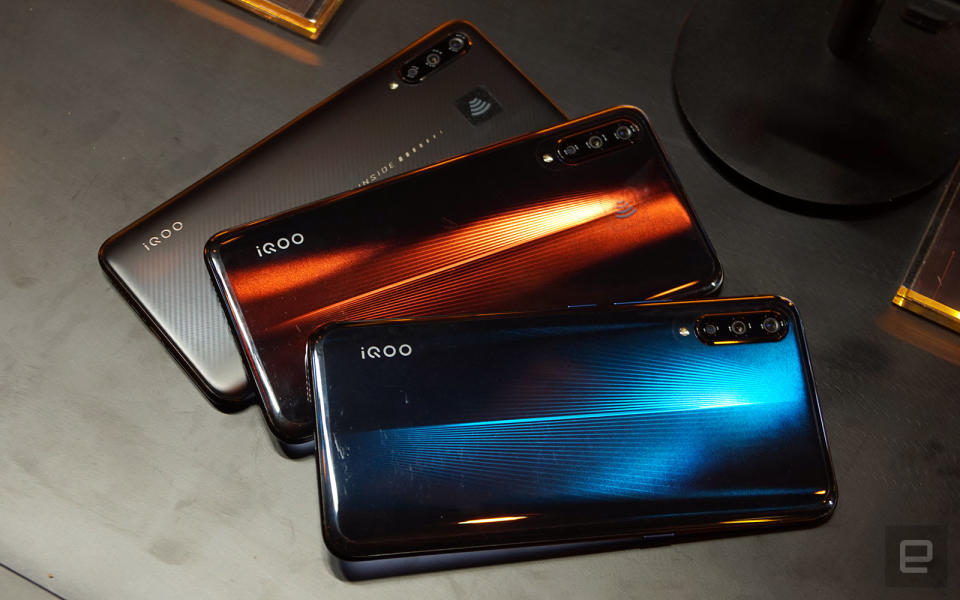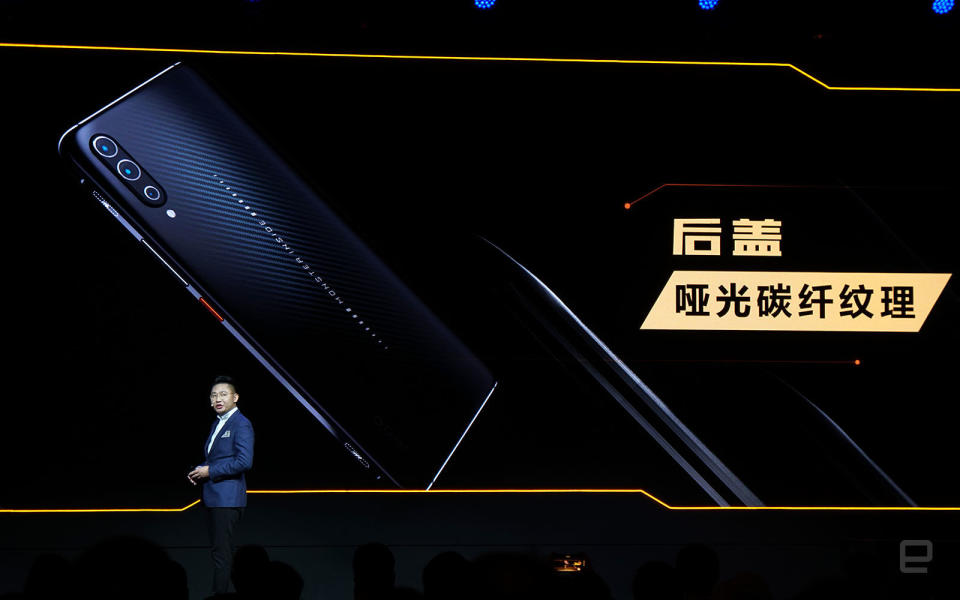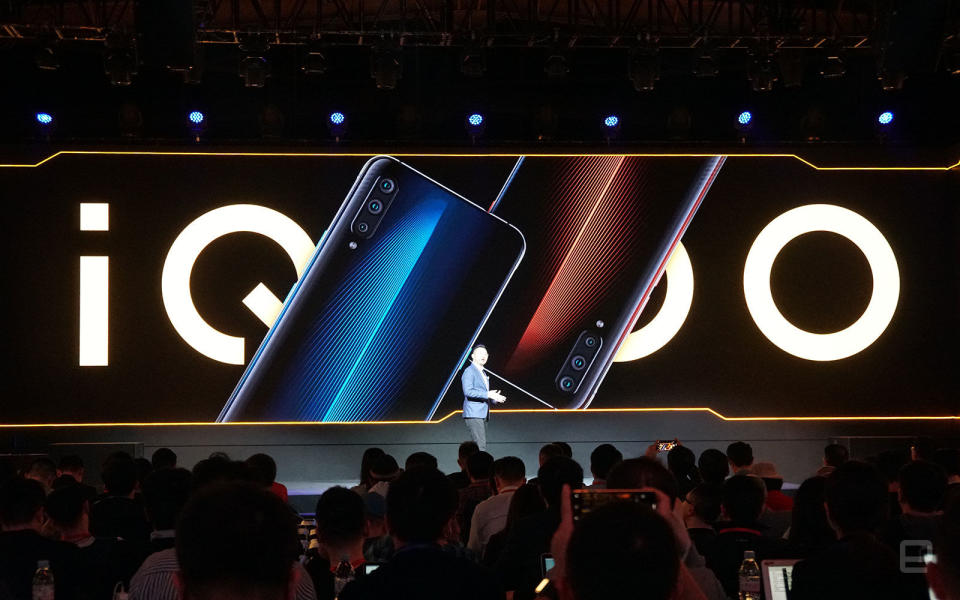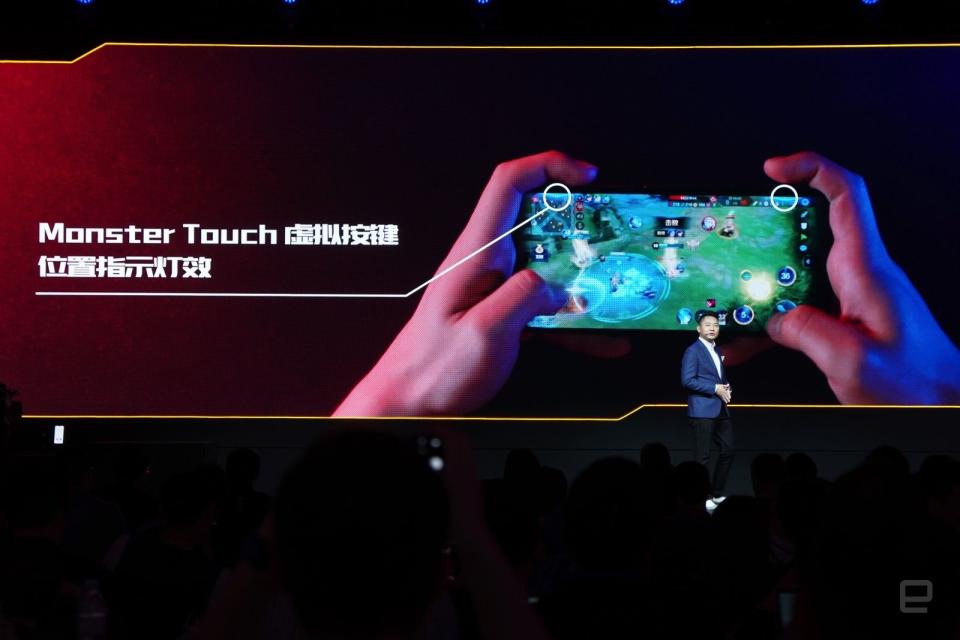Vivo's iQOO phones are tuned for hardcore mobile gamers
The iQOO packs up to 12GB of RAM, and takes just 45 minutes to be fully charged.
Vivo is no stranger when it comes to a list of "firsts" in the smartphone market, with notable achievements including the in-display fingerprint reader, the notch-less all-screen design, the pop-up front camera, the dual-display implementation and, most recently, the port-less all-glass device.
Now, the Chinese company is flexing its mobile muscles by tapping into the gaming segment, and it's doing so by way of a new sub-brand dubbed iQOO, which awkwardly stands for "I Quest On and On." Naturally, its first namesake smartphone is also quite the powerhouse.
Perhaps to no one's surprise, the iQOO runs on Android 9 and is powered by Qualcomm's Snapdragon 855 chipset, with the 2,998 yuan (about $450) base model shipping with 6GB of RAM plus 128GB of storage, and the specced-out model packing 12GB of RAM plus 256GB of storage but asking for 4,298 yuan ($640).
The main specs are pretty much the same across the iQOO family, namely a 6.41-inch 2,340 x1,080 AMOLED display with a dewdrop notch (91.7-percent screen-to-body ratio), in-display fingerprint reader, triple rear cameras, NFC and LTE bands that are good for US and Europe.
With the exception of the 6GB RAM base model, these devices all feature a new 44W Vivo Super FlashCharge, which takes just a mere 15 minutes to charge the depleted 4,000mAh battery up to 50 percent, or just 30 minutes to go from zero up to 85 percent, or just 45 minutes to get it fully charged.
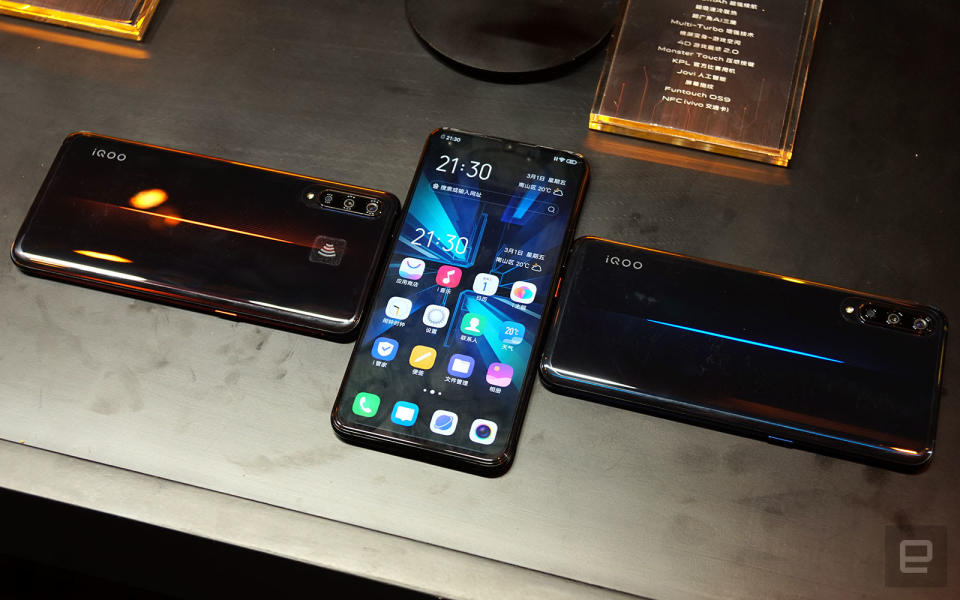
All these models feature a 3D glass body on the back decorated by an LED strip running partially down the middle, along with blue or orange reflective light trails surrounding the strip -- as inspired by sports cars, apparently. In addition to the blue option, the top-spec model also comes in a black "Monster" variant with a soft, more low-key faux-carbon fiber overlay on the glass. As you'd expect, the LED strip serves as a notification light as well as fancy lighting while gaming.
To help gamers, the iQOO comes with left and right pressure-sensitive "Monster Touch" shoulder buttons on the mid-frame. This isn't a first for Vivo (especially in China), but I'm glad the company didn't skip out on this seemingly more common feature.
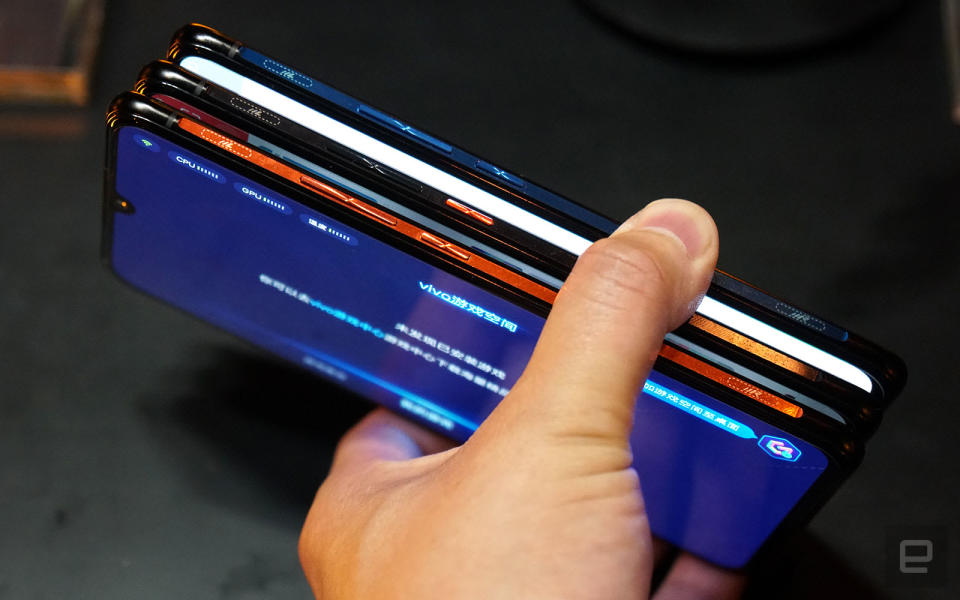
Also worth mentioning is the new vapor cooling system inside the iQOO phones, which is a must-have feature on gaming smartphones these days. According to Vivo's own tests, this manages to keep the new devices 14 percent cooler than the original NEX. This is further assisted by various software features to help avoid dropping frames, prioritize system resources and seamlessly switch between 4G and WiFi. The benchmarks for these features apparently earned iQOO the title of "official phone" of King Pro League, the eSports event for King of Glory aka Arena of Valor.
Last but not least, the cameras. The triple set on the back consist of a 12-megapixel main camera (Sony IMX363 sensor, as featured on the back of the Google Pixel 3), a 13-megapixel 120-degree super wide camera and a 2-megapixel bokeh camera. The front camera in the dewdrop notch also comes in at 12 megapixels.
The iQOO range is already available for ordering in China tonight, and I've been told that Vivo plans to bring these gaming phones outside of China at some point. Either way, iQOO is now in a unique position to compete against the likes of ASUS' ROG Phone, Nubia's Red Magic Mars, Xiaomi-backed Black Shark and the Razer Phone series (or maybe not). With those price points plus Vivo's marketing prowess in Asia, iQOO may be off to a good start.
Update 3/1/19 9:46AM ET: This article has been updated to reflect that the faux carbon fiber pattern comes from an overlay instead of under the glass.

